 American Numismatic Association Coin Grading (ANACS), was established in 1972 and started grading coins in 1979. In 1986 Professional Coin Grading Service (PCGS) started and a year later in 1987, Numismatic Guaranty Corporation (NGC) was founded.
American Numismatic Association Coin Grading (ANACS), was established in 1972 and started grading coins in 1979. In 1986 Professional Coin Grading Service (PCGS) started and a year later in 1987, Numismatic Guaranty Corporation (NGC) was founded.
Today PCGS and NGC are the market leaders in coin grading. Both companies also grade banknotes and medals. And what do they do?
Actually, it was a revolution in coin collecting. Experts graded the coin and it is encapsulated in a clear plastic holder known as a “slab” with a label identifying the coin and the grade of the coin. Some coins cannot be graded because of damages like hairlines, environmental damage, artificial toning and edge damages to mention only a few.
In the early days I must admit that I hated graded coins. Whenever I bought a graded coin, I would take it out of the slab immediately. Taking a coin out of the slab is not easy. One has to put the plastic holder into a cloth and hammer gently on the edge to crack it. It is important to be very careful so the plastic holder does not damage the coin.
The reason why I did not like slabbed coins is that sometimes I disagreed with the grading and wrong identification. This was the case in the early days when the grading companies started grading not only US coins but also foreign coins.
Later, when I attended coin shows in Hong Kong and China, I saw it was almost impossible to sell ungraded coins, also called “raw” coins. The reason was that the market was floating with fakes and copies produced in China, not only Chinese coins were faked, also foreign ones.
The grading companies are giving a financial guarantee that the grade is correct and that the coin is genuine. If it is later found out and proved that the grade is not correct or a coin is a fake, the buyer is paid the true value of the genuine coin by the third grading company.
With third grading it is also saves a lot of discussions between the seller and buyer about the grade. With “raw” coins there are often long discussions about the grade, the seller often thinks the grade is better and the buyer is of the opinion that the coin grades less. The price difference is significant. A better grade coin in cost much more than a lower grade coin.
Coins are graded from 1 to 70 with 70 being the highest. In catalogues, coins are now often graded with numbers, which were formerly graded as Good, Fine, Very Fine, Extremely Fine and Uncirculated. As an example of prices, the Standard Catalogue of World Coins 1701-1800, 7th Edition, states that a Flowing Hair Dollar graded VF40 is valued at US$300,000 while the MS60 grade is valued at US$1,000,000.
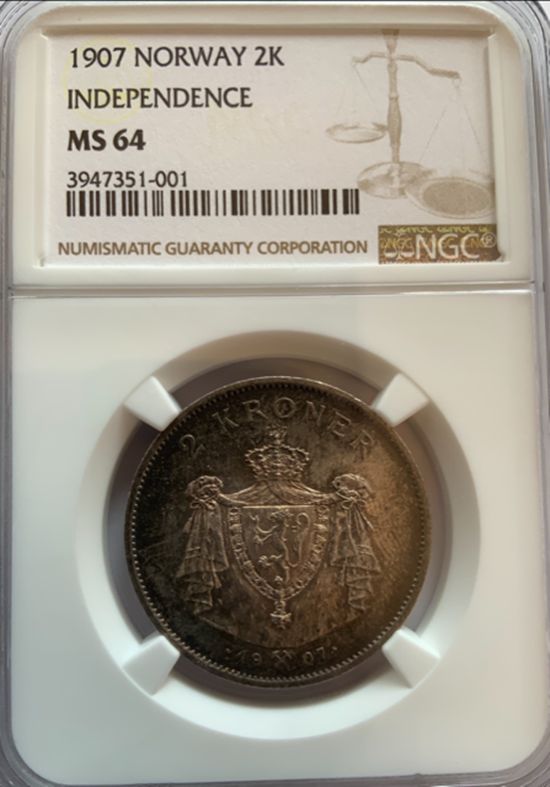
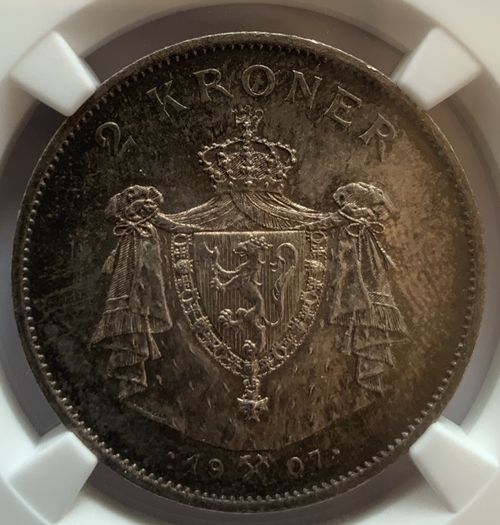
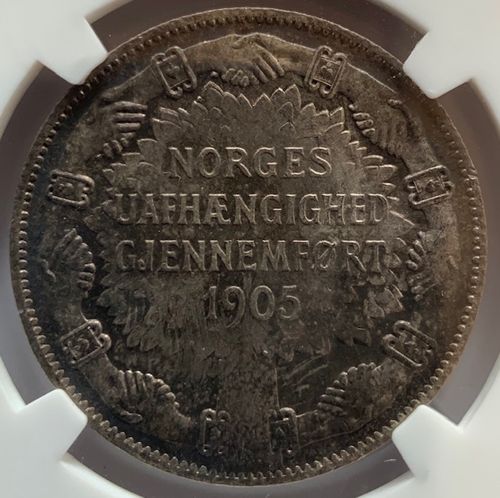 Another example is the Norway 2 kroner 1907 Independence, graded MS64. (pictured) In the Standard Catalogue of World Coins 2019 it is valued in MS63 at US$295. In VF20 it is valued at US$50. The pictured coin is graded MS64, so it can be sold for quite a lot more than the one in the catalogue graded at the best MS63.
Another example is the Norway 2 kroner 1907 Independence, graded MS64. (pictured) In the Standard Catalogue of World Coins 2019 it is valued in MS63 at US$295. In VF20 it is valued at US$50. The pictured coin is graded MS64, so it can be sold for quite a lot more than the one in the catalogue graded at the best MS63.
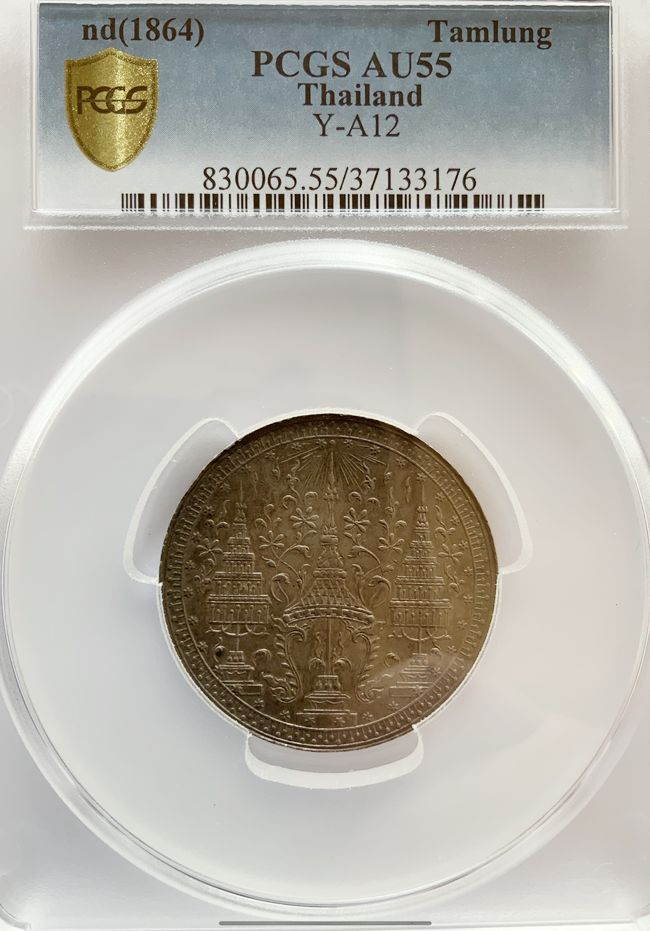
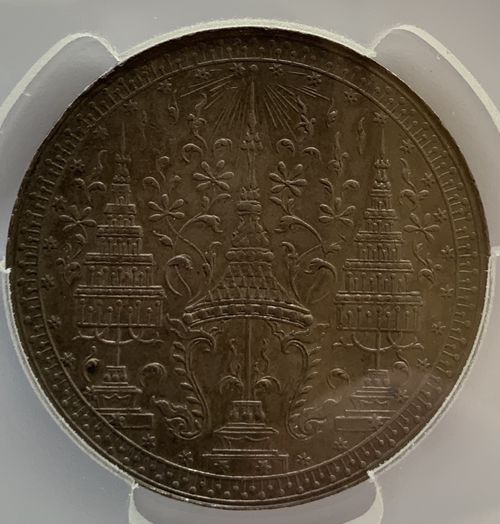
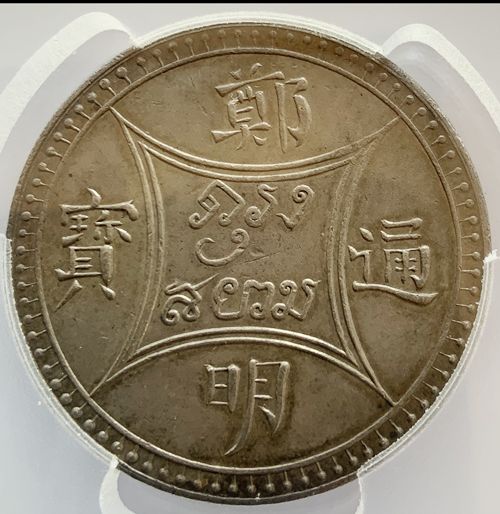 A very popular Thai coin is the Tamlung, 4 baht, with no date, struck in 1864 to commemorate King Mongkut, Rama IV’s 60th Birthday. Inside the frame on the reverse it has the inscription Krung Siam, Kingdom of Siam. Outside the frame the inscription is Cheng Ming, which is the name of the King in Chinese, and Tung Pao, which means lawful money. In the Standard Catalogue of Coins 1801-1900, 8th Edition it is valued in MS60 up to US$24,000.
A very popular Thai coin is the Tamlung, 4 baht, with no date, struck in 1864 to commemorate King Mongkut, Rama IV’s 60th Birthday. Inside the frame on the reverse it has the inscription Krung Siam, Kingdom of Siam. Outside the frame the inscription is Cheng Ming, which is the name of the King in Chinese, and Tung Pao, which means lawful money. In the Standard Catalogue of Coins 1801-1900, 8th Edition it is valued in MS60 up to US$24,000.
The pictured coin is graded to be AU55 so the value according to the catalogue is worth less.
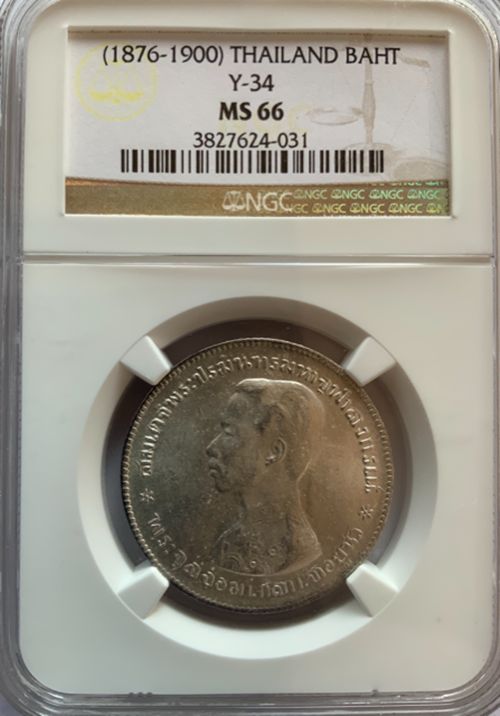
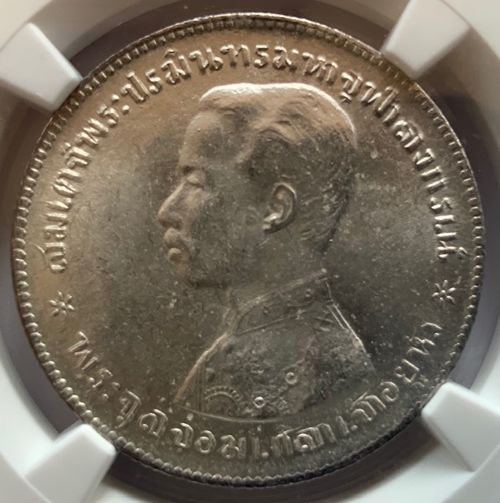
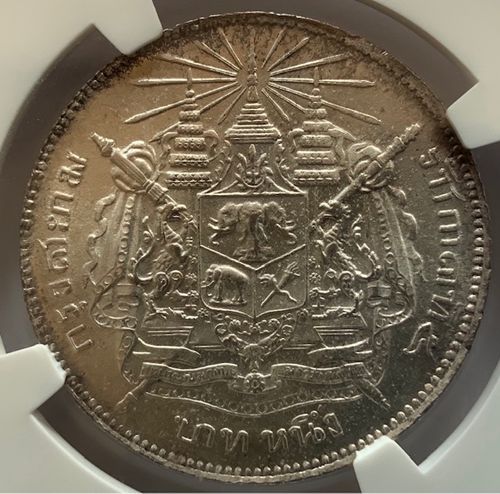 The pictured one Baht 1876-1900 is graded to be MS66. In the Standard Catalogue of Coins 1801-1900, 8th Edition, the coin is graded from F12 to MS60. In MS60 it is valued at US$250. Why it is not valued in the higher grades like the MS66 is because it very rarely turns up in this grade. Probably the auction price of a one Baht in MS66 would sell for between US$2,000 to US$3,000.
The pictured one Baht 1876-1900 is graded to be MS66. In the Standard Catalogue of Coins 1801-1900, 8th Edition, the coin is graded from F12 to MS60. In MS60 it is valued at US$250. Why it is not valued in the higher grades like the MS66 is because it very rarely turns up in this grade. Probably the auction price of a one Baht in MS66 would sell for between US$2,000 to US$3,000.
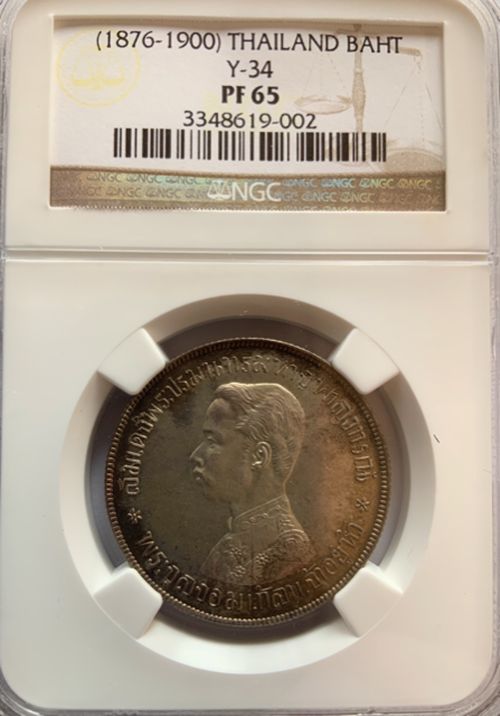
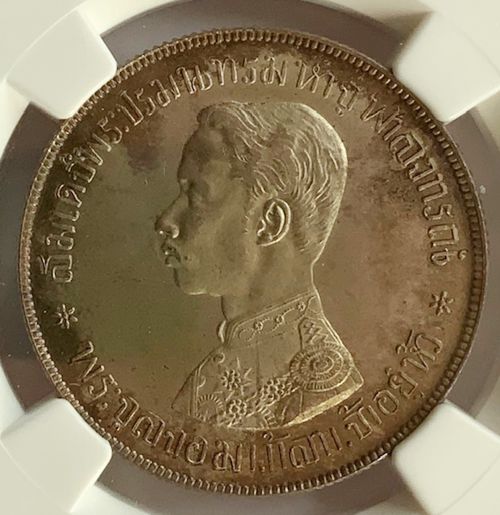
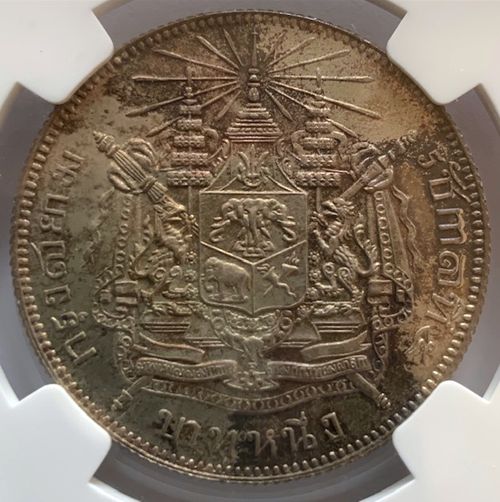
The Thailand 1 Baht 1876-1900 was also struck in PROOF meaning that it was struck with polished dies. Those were presentation pieces and in PF60 grade it is valued at US$6,000. Probably the pictured coin graded in PF65 could be sold for more.
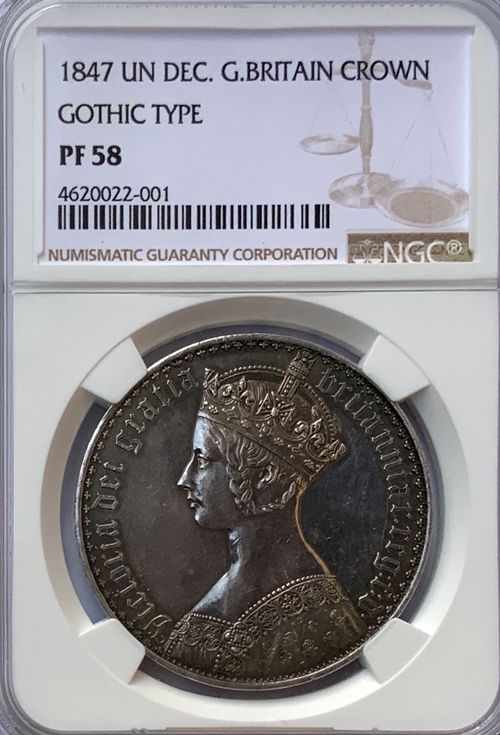
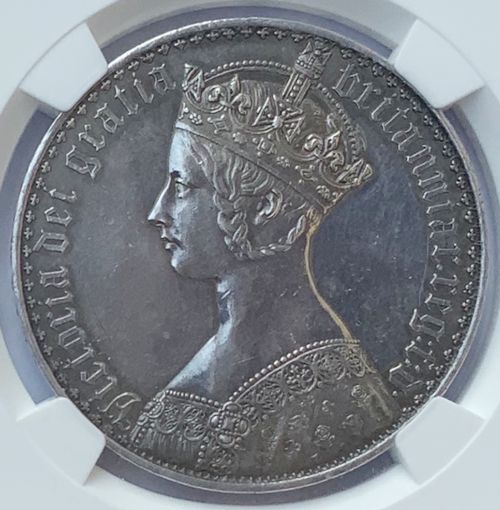
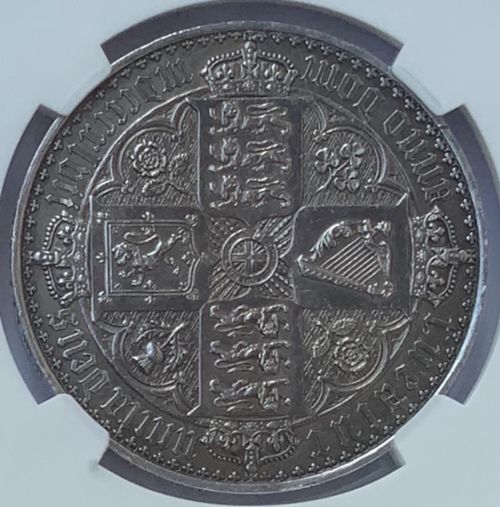 The pictured Great Britain Gothic Crown graded PF60 has a catalogue value of US$6,000. As the pictured coin is graded in PF58 it is worth less.
The pictured Great Britain Gothic Crown graded PF60 has a catalogue value of US$6,000. As the pictured coin is graded in PF58 it is worth less.
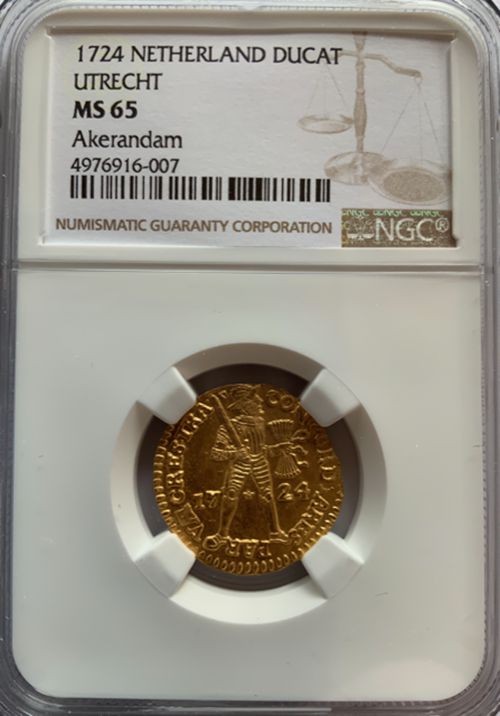
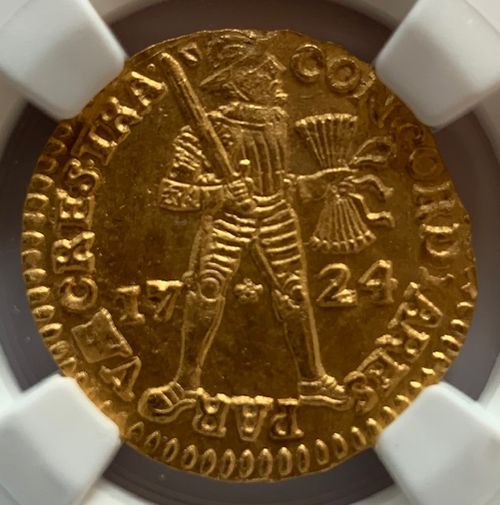
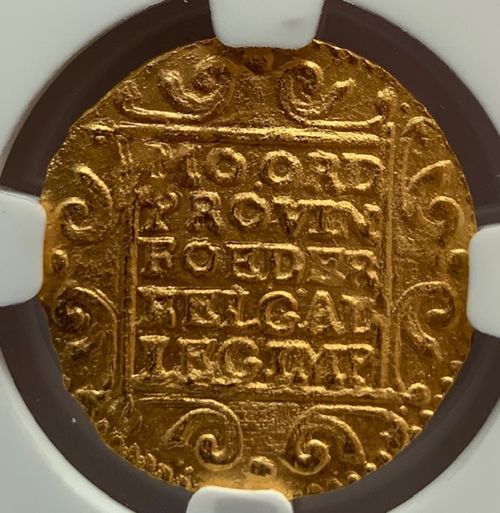 The pictured Netherlands, Utrecht gold Ducat 1724, is from the ship Akerendam that sank off Runde Island on the coast of Norway in 1725. The shipwreck was found by divers in 1972 and 6,505 pieces of the Ducat was salvaged. Prior to the wreck of the Akerndam only one Ducat 1724 was known to exist, so I assume the owner must have been disappointed when several thousands more were available in the market. This pictured coin is graded in MS65. This is one of the best of the rescued coins and is only graded in the catalogue in MS60 at US$850, so I assume a MS65 would be sold for quite a lot more.
The pictured Netherlands, Utrecht gold Ducat 1724, is from the ship Akerendam that sank off Runde Island on the coast of Norway in 1725. The shipwreck was found by divers in 1972 and 6,505 pieces of the Ducat was salvaged. Prior to the wreck of the Akerndam only one Ducat 1724 was known to exist, so I assume the owner must have been disappointed when several thousands more were available in the market. This pictured coin is graded in MS65. This is one of the best of the rescued coins and is only graded in the catalogue in MS60 at US$850, so I assume a MS65 would be sold for quite a lot more.
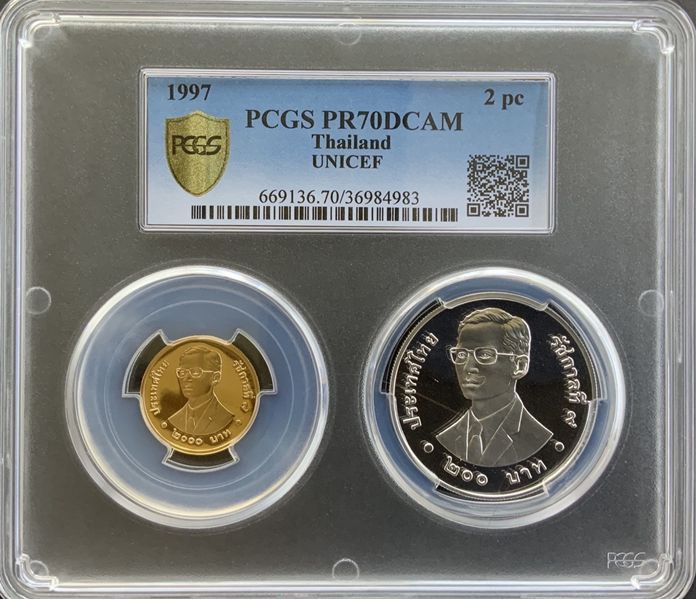
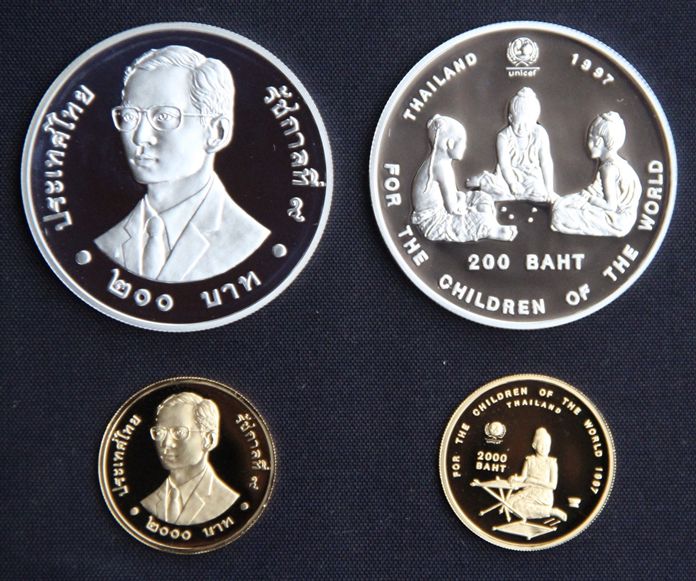 PCGS also put two or three coins in one slab, the ones with two coins are called duo-holders. Pictured is the Thai gold 200 Baht and silver 2000 Baht 1997 UNICEF. Only 1290 pieces of the gold coin and 2123 pieces of the silver coin were minted. Both coins are graded to be PR70, the highest grade, and I assume the value is around US$1,200.
PCGS also put two or three coins in one slab, the ones with two coins are called duo-holders. Pictured is the Thai gold 200 Baht and silver 2000 Baht 1997 UNICEF. Only 1290 pieces of the gold coin and 2123 pieces of the silver coin were minted. Both coins are graded to be PR70, the highest grade, and I assume the value is around US$1,200.
Some dealers and collectors like grading while others do not. The ones who do not like it argue that one should be able to have “contact” with the coin and think that coin collecting is too commercialized. They have the enjoyment of doing the investigation themselves as a part of the hobby. They also argue that graded coins take up much more space.
The ones who like the grading are sometimes the ones with less knowledge and look at coin collecting as an investment. They do not want to spend the time discussing the grade with the seller and like to have the financial guarantee from the third-party grader of the quality and that the coin is genuine. From my experience graded coins are often sold for at higher prices than raw coins.
So, what happens in the market after the coins are graded? It seems like everyone wants to have coins top graded from AU55 to MS70. They do command very high prices at auctions unless they are very rare, while the ones in less quality are often not sold even when they are nice coins.
Sometimes it is better to sell the coins, which are not in the top grades raw, as someone might be of the opinion that it is actually better than when graded by the auctioneer and will be graded higher by the third-party grader.
 |
 |
 |





